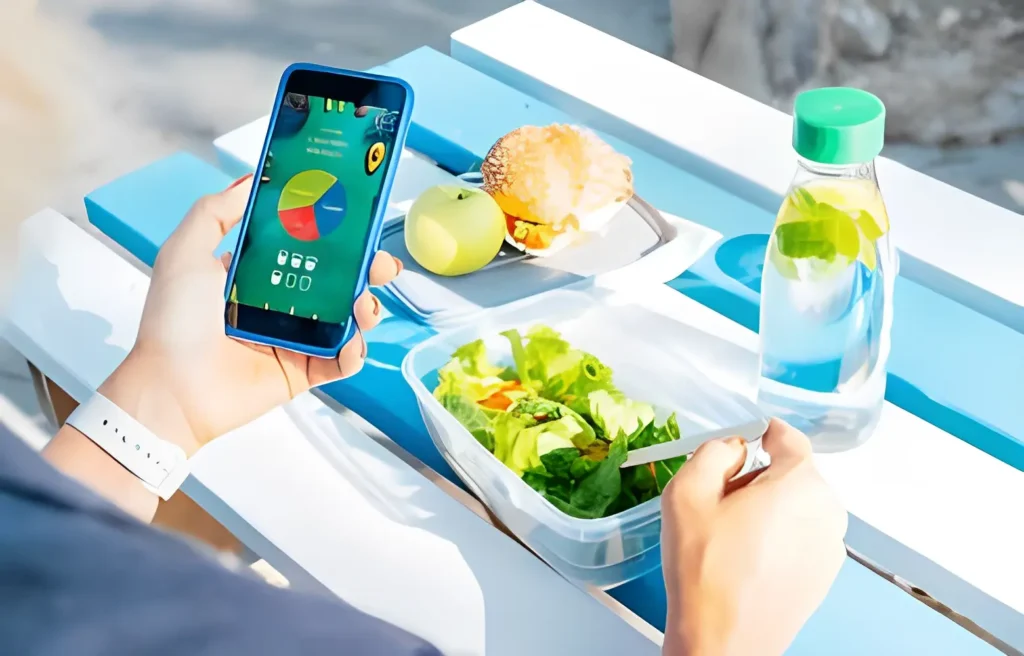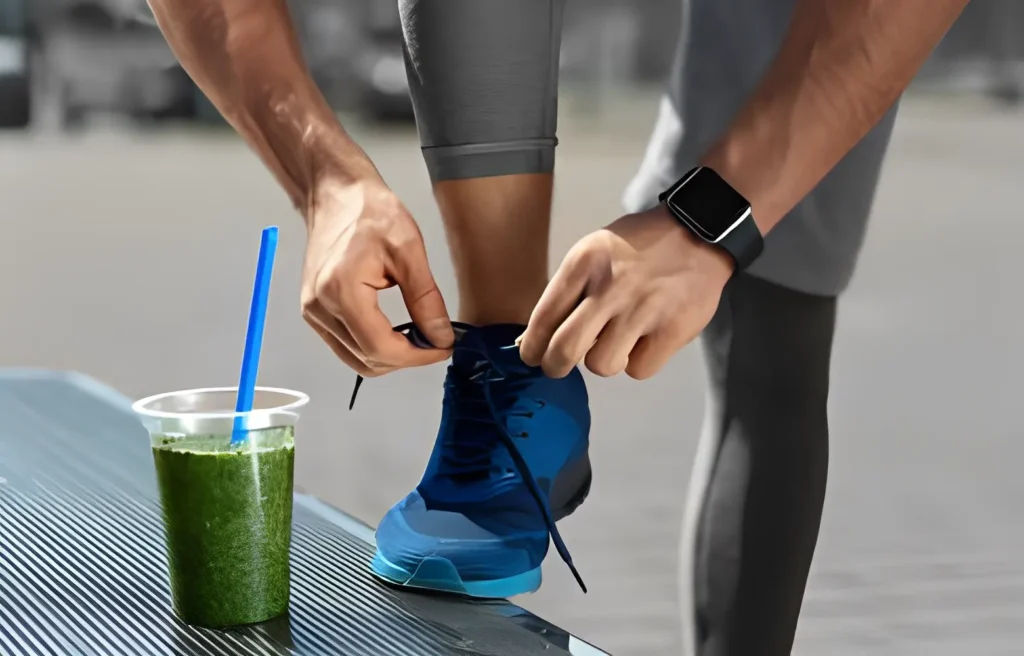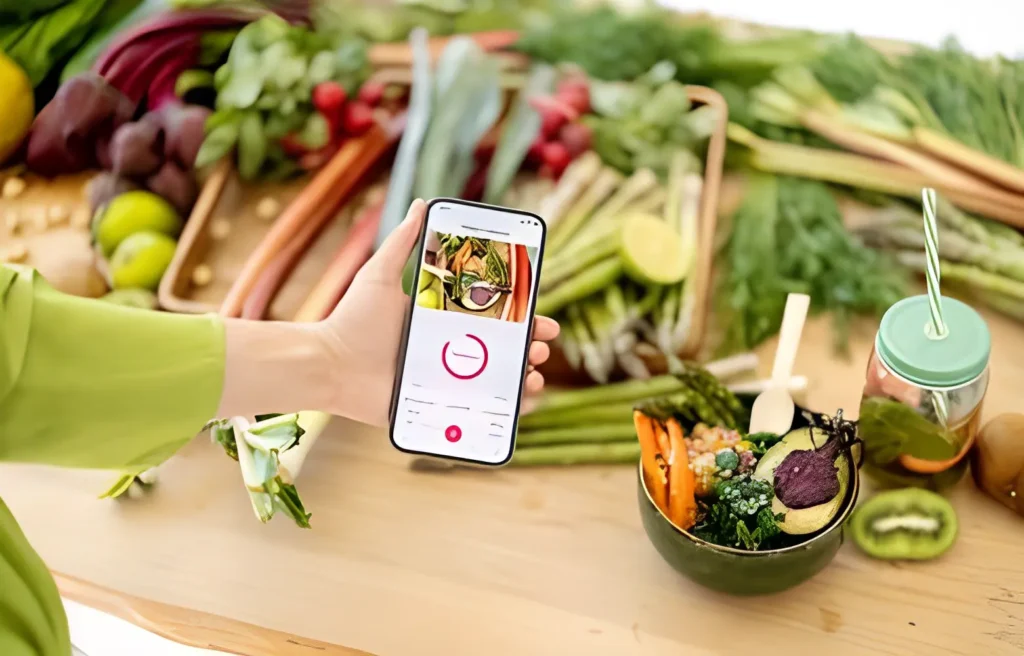Feeling lost in a sea of conflicting nutrition advice? Ever wonder where all those calories you think you burn actually come from? Enter the food tracker, your secret weapon for understanding your relationship with food.
But wait, what exactly is food tracking? Think of it like a personalized nutrition detective! You document what you eat and drink (don’t worry, we’ll get to the “how” later!), gaining valuable insights into your daily fuel sources. This intel empowers you to make informed choices, whether your goal is conquering a marathon, shedding some pounds, or simply fueling your body for all life’s adventures.
Hold on, isn’t this just for bodybuilders and dieters? Absolutely not! Food tracking benefits everyone, from active individuals seeking peak performance to curious folks wanting to optimize their energy levels.
Imagine:
- Athletes: Fine-tuning their nutrition for optimal performance and recovery.
- Weight managers: Identifying patterns and making adjustments for sustainable weight loss or gain.
- Foodies: Exploring the impact of different foods on their moods and energy.
- People with health conditions: Working with healthcare professionals to manage specific dietary needs.
But isn’t food tracking boring and time-consuming? The myths are strong with this one! Modern food trackers are sleek, user-friendly, and integrate seamlessly into your busy life. Plus, the benefits far outweigh the (minimal) effort:
- Greater self-awareness: Discover hidden habits and patterns in your eating.
- Informed decision-making: Choose foods that align with your goals and preferences.
- Improved accountability: Stay motivated and on track towards your aspirations.
- Boosted health: Make data-driven decisions for better well-being.
Ready to ditch the confusion and embark on your personalized food tracking journey? Buckle up, because next, we’ll explore the different types of trackers, find the perfect fit for you, and dive into the exciting world of logging your food like a pro. Stay tuned!
II. Choosing the Right Food Tracker:

Finding the perfect food tracker can feel like searching for a unicorn: mythical and endlessly elusive. But fear not, fellow health adventurer! This guide will unravel the mysteries of popular trackers, helping you pick the one that matches your unique needs and lifestyle.
So, before you dive into a sea of apps, ask yourself:
- What’s your main goal? Weight loss? Building muscle? Simply understanding your eating habits? Each tracker caters to specific goals, so knowing yours is key.
- Are you a data nerd or a simplicity seeker? Some trackers offer deep dives into every nutrient, while others focus on ease of use. Choose your level of detail preference.
- Privacy is paramount, right? Make sure your chosen tracker has robust data security measures to keep your sensitive information safe.
- Budget blues? Free or premium – the choice is yours. Consider the features you need and weigh them against the cost.
Now, let’s explore some popular trackers, each with its own charm:
MyFitnessPal: The Calorie & Macro Counter Champion
Ever wonder how many calories are in that slice of pizza? MyFitnessPal has your back! This classic food tracker boasts a massive food database, detailed calorie and macro tracking, and progress reports. But be warned, the sheer volume of data can feel overwhelming for beginners.
Cronometer: The Detailed Nutrient Detective
Think vitamins and minerals are your jam? Cronometer is your knight in shining armor. It dissects every food item, revealing a treasure trove of nutritional information beyond just calories. If you have specific dietary needs or want a deep dive into your micronutrient intake, this is your go-to.
LoseIt!: The Weight Loss Warrior
Looking to shed some pounds? LoseIt! is your cheerleader. It guides you towards your weight loss goals with personalized calorie budgets, meal plans, and motivational challenges. It’s especially helpful for visual learners, offering progress charts and graphs to keep you on track.
SparkRecipes: The Recipe-Centric Companion
Cooking enthusiast? SparkRecipes integrates seamlessly with your food tracking, allowing you to import recipes, calculate nutritional content, and track meals with ease. Plus, it offers a vast recipe library for inspiration and healthy meal planning.
Yazio: The Visual & Goal-Oriented Guru
Need a tracker that speaks your visual language? Yazio uses colorful food photos and progress charts to make tracking engaging and fun. It also allows you to set specific goals, like increasing water intake or reducing sugar, and provides personalized feedback to keep you motivated.
But this is just the tip of the iceberg! Consider niche trackers for specific dietary needs, journaling apps for deeper reflection, or meal planning tools for organized eating. Ultimately, the best food tracker is the one that fits your unique personality and health goals.
Remember: Don’t get lost in the sea of options! Reflect on your preferences, try out a few trackers, and find the one that makes your health journey enjoyable and sustainable. Happy tracking!
III. Getting Started with Food Tracking:

Congratulations on taking the first step to a healthier you! But now, with your shiny new food tracker (whether it’s MyFitnessPal, LoseIt!, or your personal favorite), you might be feeling a little overwhelmed. Don’t worry, matey, we’re here to navigate the uncharted waters together!
First things first:
- Download and set up: Dive into your chosen food tracker app or website. Feeling lost? Don’t be shy! Most apps offer tutorials and FAQs to get you started. Pro tip: Consider user-friendliness when choosing your tracker – it’ll make the journey smoother.
- Account creation: Fill out your profile honestly. Your age, weight, activity level, and goals all help the tracker personalize your experience and provide accurate insights.
Logging your food: Accuracy is key!
Now, the exciting part: logging your food! But remember, accuracy is our treasure map. Here’s how you can be a food tracking pirate pro:
- Log in real-time: Don’t rely on your memory later! Logging right after you eat ensures accurate portion sizes and avoids guesswork.
- Specificity is your friend: “Chicken sandwich” is too vague. Specify grilled/fried, whole wheat/white bun, size, even the sauce! Don’t underestimate those sneaky calorie culprits.
- Measuring tools are your allies: Food scales and measuring cups are your best friends when it comes to portion control. Ditch the eyeballing! ⚖️
- Extras matter: Condiments, dressings, oils – log them all! They can pack a hidden calorie punch.
- Portion control confusion? Many trackers offer photo guides or reference images to help you visualize serving sizes. No more “is this a medium or large?” dilemmas!
Setting sail with personal goals:
It’s time to get personal! What are your food tracking goals?
- Weight loss? Work with your doctor to set a safe and realistic weekly goal (e.g., 1-2 lbs) and track your progress using the tracker’s handy tools.
- Muscle building? Focus on protein intake and track your macros (carbohydrates, protein, fat) to ensure you’re fueling your fitness journey.
- Energy boost? Monitor your food choices and identify patterns that impact your energy levels. Feeling sluggish after that afternoon donut? Now you know why!
Tracking progress: Celebrate your victories!
Seeing progress is the best motivator! Most food trackers offer charts and graphs to visualize your journey. High five yourself for hitting milestones and remember, setbacks are simply opportunities to learn and adjust. Progress, not perfection, is the key! ✨
Exercise data: A holistic view:
Working out? Fantastic! Some food trackers let you sync your fitness tracker data, giving you a complete picture of your calorie balance (calories burned vs. consumed). Knowledge is power, right?
Unlocking the treasure chest: Your tracker’s hidden gems!
Most food trackers offer more than just logging. Take advantage of their features!
- Meal planning: Streamline your week and avoid unhealthy last-minute decisions with built-in meal planning tools. ️
- Insights and reports: Uncover hidden patterns in your diet with detailed reports on macronutrients, vitamins, and more. Knowledge is power!
- Recipe integration: Find inspiration and healthy options with recipe integration features. No more “what should I cook?” dilemmas! ️
Remember, this is your personalized journey with your food tracker. Embrace the process, be kind to yourself, and celebrate every step towards a healthier, happier you!
P.S. Still have questions? Drop a comment below – I’m here to help!
IV. Advanced Food Tracking Techniques:

Okay, food tracker rockstars, you’ve mastered the basics! Now, let’s delve into the advanced techniques that unlock personalized insights and supercharge your health goals. Buckle up, mateys!
Macro & Micronutrient Magic:
Feeling like muscle building is hitting a wall? Maybe it’s time to track your macronutrients (protein, carbs, fat). Are you hitting your protein goals to support muscle growth? Similarly, if boosting energy is your aim, diving deeper into micronutrients (vitamins, minerals) can reveal hidden deficiencies. Talk to a registered dietitian to understand your unique needs and set personalized targets.
Dietary Detective: Unearthing Patterns:
Ever feel sluggish after that afternoon burger? Food tracking shines light on these patterns! Review your logs and identify if certain foods impact your mood, energy, or digestion. Food sensitivity? Track potential triggers and see if they correlate with symptoms. Remember, consistency is key here – the more you log, the clearer the picture!
Meal Prep Magic: Saving Time & Sanity:
Time-pressed? Meal prepping is your new BFF! Dedicate a few hours on the weekend to cook in bulk, portioning out healthy meals for the week. Food tracker to the rescue again! Plan your meals in advance, log servings, and enjoy nutritious, stress-free lunches and dinners.
Barcode Scanner: Your Pocket Nutritionist:
Say goodbye to manual food entry! Many food trackers offer built-in barcode scanners. Simply scan packaged foods for instant nutritional information. Worried about accuracy? Double-check with the product label to ensure everything matches up. This is a real time-saver for grocery shopping and tracking processed foods.
Recipe Integration: Inspiration at Your Fingertips:
Feeling stuck in a recipe rut? Food trackers with recipe integration are your culinary compass! Discover healthy options, log ingredients with a single click, and track the nutritional value of your homemade meals. Bon appétit!
Conquering Challenges & Plateaus:
Even the most dedicated food trackers hit bumps in the road. Feeling discouraged by a weight loss plateau? Analyze your logs, adjust your calorie intake slightly, and remember, progress isn’t always linear. Motivation waning? Switch things up with new recipes, track different metrics, or team up with a friend for accountability. Consistency is key, but flexibility is vital too!
Remember, food tracking is a journey, not a destination. Enjoy the process, experiment with different techniques, and celebrate your progress along the way. Your food tracker is your personalized health coach, empowering you to make informed choices and reach your goals. Now go forth and conquer!
V. Food Tracking for Specific Needs:

Food allergies and intolerances: Feeling restricted? Don’t fret! Food trackers can be your secret weapon. Track trigger foods, identify patterns, and manage symptoms with ease. Ever wonder if that afternoon headache is linked to gluten? Log your meals and discover the answer!
Vegetarian, vegan, and other dietary restrictions: Plant-based powerhouses, rejoice! Many food trackers cater to specific dietary needs, offering ingredient filters, nutrient breakdowns, and recipe inspiration. Struggling to meet your iron needs as a vegan? Your tracker can guide you towards iron-rich plant sources.
Managing chronic conditions: Food tracking becomes an essential tool for conditions like diabetes. Monitor blood sugar levels, track carbohydrate intake, and adjust your diet accordingly. Feeling overwhelmed? Consider consulting a registered dietitian for personalized guidance. ⚕️
Tracking for pregnant and breastfeeding individuals: Nourishing your little one? Food trackers can help ensure you’re meeting your increased nutritional needs. Monitor key nutrients like folate and calcium, and track your water intake. Wondering how much folic acid you need during pregnancy? Your tracker can provide tailored recommendations.
Adapting for children and families: Raise healthy eaters from the start! Food trackers become family affairs, encouraging healthy habits and portion control. Worried about picky eaters? Involve them in meal planning and tracking, making healthy choices fun!
Remember:
- Consult your doctor or a registered dietitian before making significant dietary changes, especially when managing chronic conditions.
- Food trackers are tools, not replacements for professional medical advice.
- Focus on progress, not perfection.
So, are you ready to embark on your personalized food tracking journey? No matter your dietary needs, this powerful tool can be your guide to a healthier, happier you.
VI. Long-Term Success with Food Tracking :

Okay, you’ve been rocking your food tracker. Logging meals, hitting goals, feeling amazing! But let’s talk long-term success, because let’s face it, food tracking ain’t a fad diet (been there, done that, got the stretchy pants!). Here’s how to keep the momentum going:
Motivation Matters:
Feeling the “ugh, food tracker fatigue”? We’ve all been there. But remember, food tracking is a tool, not a dictator. Take a break if needed, experiment with different approaches, and don’t be afraid to ask for help (community forums, registered dietitians, your awesome self!).
Balance is Key:
Enjoying food is possible with food tracking. Restricting everything will only lead to cravings and resentment. Focus on mindful eating (savor flavors!), healthy swaps (whole-wheat pasta instead of white), and indulging occasionally (life’s too short to skip dessert!).
Celebrate Your Wins (Big and Small!):
Reached a mini-goal? High five yourself! Lost a pound? Do a happy dance! Celebrating progress, no matter how small, keeps you motivated and reminds you why you started this journey.
Sustainable Changes, Please!
Forget crash diets and unrealistic expectations. Aim for gradual, sustainable changes that fit your lifestyle. Swap sugary drinks for water, incorporate more veggies into your meals, and listen to your body’s hunger cues. Remember, it’s a marathon, not a sprint!
Mindfulness and Intuitive Eating:
Food tracking can be a stepping stone to mindful eating and intuitive eating. Pay attention to how different foods make you feel, eat without distractions, and honor your body’s hunger and fullness cues. Soon, you’ll be making healthy choices naturally!
Remember, long-term success with food tracking is about building a healthy relationship with food and creating sustainable habits. Be patient, kind to yourself, and enjoy the journey!
P.S. Share your long-term food tracking tips and struggles in the comments below! We’re all in this together.
VIII. Conclusion:

So, you’ve reached the end of your food tracking adventure! Feeling empowered? Remember, this is just the beginning.
Food tracking isn’t a magic wand, but it can be a powerful tool for understanding your diet, setting goals, and achieving lasting health improvements. Is it perfect? Nope. But the insights you gain are priceless. ✨
Ready to take the plunge? Don’t overthink it! Dive into a few popular food trackers (MyFitnessPal, LoseIt!, SparkRecipes) and see what clicks. Remember, the best tracker is the one you’ll actually use.
Feeling lost? Need support? We’ve got your back!
- Check out: The National Eating Disorders Association for healthy food tracking tips and support: https://www.nationaleatingdisorders.org/.
- Connect with: Registered dietitians for personalized guidance: https://www.eatright.org/. ⚕️
- Explore: Evidence-based nutrition information from Harvard Health: [[invalid URL removed]]([invalid URL removed]).
Remember, your health journey is unique. Embrace the ups and downs, celebrate your wins, and keep exploring with your food tracker by your side!
P.S. What are your biggest takeaways from this guide? Share your thoughts in the comments below!
Read: protein foods list for weight loss